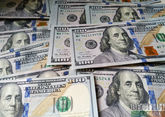The U.S. Fed is poised to cut interest rates in hopes of shielding the 11-year economic expansion from growing global uncertainties.
The Federal Open Market Committee, at the end of its two-day meeting this afternoon, is widely expected to announce a quarter-point rate cut, its first since it took interest rates to zero during the financial crisis in December 2008. It is also expected to leave the door open to further rate cuts.
Some market pros expect a 50 basis point cut, but the fed funds futures market puts the probability of a quarter-point cut at more than 78% and a half-point cut at around 22%, according to the CME Fed Watch Tool.
Fed Chairman Jerome Powell has made it clear the Fed is willing to make an "insurance cut" to protect the economic expansion, the longest on record as of this month. He has said the Fed is concerned about low inflation and that the U.S. economy is at risk from slowing global growth and the impacts of trade wars.
Some economists believe the Fed has limited firepower with the fed funds target range at just 2.25 to 2.50, and for that reason it should move ahead to prevent the economy from weakening. On the other hand, there is a concern that if the Fed uses its limited ammunition now, while the economy is still strong, it would be powerless later on if the economy turns bad.
The Fed targets inflation at 2%, and the number it follows, the core PCE deflator inflation gauge the Fed watches, was at 1.6% in June, CNBC reported.
Even as the central bank has moved toward cutting rates, U.S. President Donald Trump continues to criticize the Federal Reserve and Powell. On the eve of the Fed’s decision, Trump said the Fed should make a big interest rate cut. The U.S. leader has also said the dollar is too weak and blamed the easy policies of other central banks, for weakening their currencies.
The central bank is expected to announce its decision on interest rates today at 21:00 Moscow time.
The chairman of the Board of the National Currency Association (NCA), Dmitry Piskulov, speaking to Vestnik Kavkaza, recalled in the first place that the Fed either kept or raised the rate in the recent years.
"In principle, it was quite low once, less than 1%, and now it has risen to 2-2.5%. Accordingly, we are talking about how to assess the impact of the rate on the economy. Tramponomy relies on the fact that, if you lower the rate it will cause an improvement in the economy, an improvement in aggregate demand, and, accordingly, will cause the economic growth. At the same time, actions of the monetary authorities are usually aimed at regulating the inflation rate," the expert noted.
According to him, in this situation, there is some disagreement between the Fed leadership and the Trump administration, which insists on lowering the rate. "There are grounds for the rate to be lowered, because the U.S. economic growth is quite modest. Inflation is also low. Therefore, the Fed can either keep the rate or start the decline. 0.25% is not a big cut. However, it will signal a certain easing of monetary policy, respectively, may lead to the growth of the U.S. economy in the future," Dmitry Piskulov said.
In addition, he recalled that the U.S. Fed rate is one of the key indicators that affect global financial markets. "We can say that the profitability of investments in U.S. assets will slightly decrease. This should lead to cheaper loans and at the same time to asset growth, a certain flow of assets to emerging markets, particularly to Russia. On the one hand, it can support strengthening of the ruble. On the other hand, it increases the percentage difference between the ruble and American interest rates. And it will be quite favorable for the ruble in terms of its strengthening. At the same time, the dollar may weaken in world currency markets," the chairman of the Board of the National Currency Association concluded.










